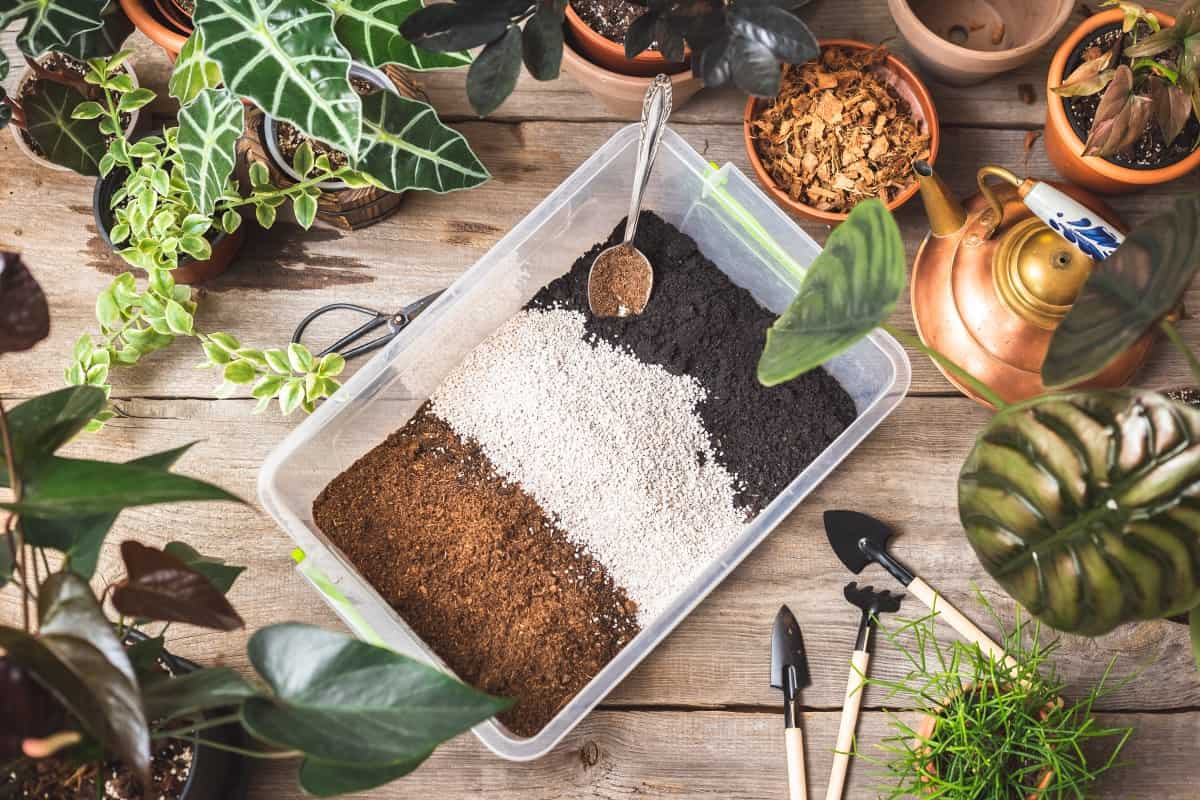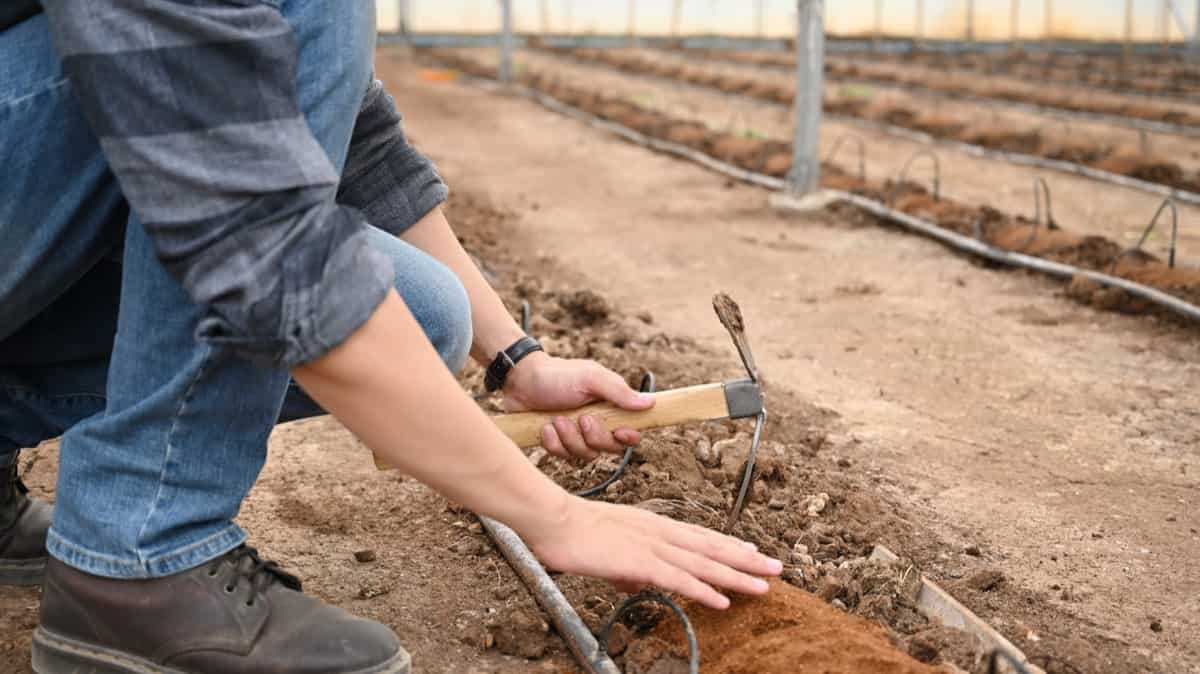Whether you’re growing vegetables, fruits, flowers, or herbs, suitable soil can make all the difference in the health and yield of your plants. If you’re an experienced gardener or just getting started, proper soil preparation is essential for a successful garden. Preparing the soil before planting helps ensure that your plants have access to the nutrients, moisture, and air they need to thrive.

Garden soil preparation
Choose a place for the garden that has good exposure to sunlight
When choosing a spot for your garden, ensure it has good sunlight exposure. This is important because plants need sunlight to grow. You can try growing shade-loving plants if you have a spot that dodoesn’tet much sun.
Checking the soil condition
- Before planting, you must ensure that the soil is in good condition. The first step is to check the pH level of the soil. You want the pH level to be between 6 and 7. Once you have the pH level where you want it, you must ensure that the soil is loose and friable.
- Finally, you need to make sure that there is enough drainage. Water should drain away from plant roots quickly, so they dodon’tecome waterlogged. To test drainage, dig a hole about 12 inches deep and fill it with water. If the water drains within an hour, then the drainage is good. If not, you may need to add some organic matter to improve drainage.
Test for nutrients
- When preparing the soil for a garden, it is essential to test for nutrients. The pH is important because it affects how well plants can absorb nutrients from the soil. Soil with a too-high or too-low pH can cause nutrient deficiencies in plants.
- NPK is crucial because it determines the level of three essential nutrients: nitrogen, phosphorus, and potassium. All three nutrients are necessary for plant growth; however, too much of any one nutrient can lead to problems. For example, too much nitrogen can cause excessive leaf growth at the expense of flower and fruit production.
- Once you have determined the level of nutrients in your soil, you can add amendments as needed to create a balanced environment for your plants.
In case you missed it: Best Soil Management Practices: A Comprehensive Guide for Beginners

Evaluate how wet the soil is
- To prepare the soil for a garden, it is essential first to evaluate how wet the soil is. The ideal moisture content for soil is somewhere in between these two extremes.
- One way to evaluate the moisture content of the soil is to take a handful of soil and squeeze it into a ball. The moisture content is suitable if the soil ball holds together and does not crumble. If the ball of soil crumbles easily, the soil is too dry. If water drips out of the ball of soil when squeezed, the soil is too wet.
Turn the soil using a shovel or motor-driven rotary tiller
The first step in preparing the soil for a garden is to loosen the top layer. This can be done with a shovel or a motor-driven rotary tiller. The goal is to loosen the soil to a depth of about 8 inches. This will allow air and water to penetrate the soil more efficiently and make it easier for roots to spread out and grow.
Adjusting the soil composition
- The soil in your garden may not be ideal for the plants you want to grow. To create a more favorable environment, you can adjust the soil composition. The three main components of soil are sand, silt, and clay. The ideal proportion of these ingredients is 40% sand, 40% silt, and 20% clay. This ideal ratio is known as loam.
- If your soil is too heavy with clay, it may be dense and compacted. This can make it difficult for roots to penetrate and cause problems with drainage. To improve compacted clay soils, add organic matter and till the soil deeply to loosen it up. You can also try planting in raised beds to improve drainage.
Add other soil amendments as necessary
If your soil is too alkaline, add lime to raise the pH. If itit’soo acidic, you can add sulfur. If your soil is poor or dodoesn’train well, you may need to add other amendments to improve it. Amendments can make light; sandy soil holds more water and nutrients and helps clay soils drain better. They also improve the texture of heavy soils so roots can more easily grow through them.
You can add many amendments to your soil, but some of the most common are compost, manure, peat moss, and vermiculite. Compost is made from decomposed organic matter, such as leaves and grass clippings. ItIt’sssential to use manure from a cow or horse because manure from carnivores (meat-eating animals) can contain a disease that could harm your plants.
Peat moss is an amendment that helps improve drainage in heavy soils and holds moisture in light soils. Vermiculite is a lightweight material that helps aerate compacted soils and hold moisture. When adding amendments to your soil, mix them well, so they are evenly distributed. You may need to add amendments yearly as they break down over time.
In case you missed it: Home Garden Soil Testing: Where to Test for Nutrients and Free Methods

Turn the soil over again with a shovel or tiller
- After the soil has been turned over once, use a shovel or tiller to turn it over again. This will help to break up any remaining clumps of dirt and roots and will also help to aerate the soil. Be sure to turn the soil over evenly so that all garden areas are evenly prepared.
- After yoyou’veototilled or spaded your soil, itit’sime to rake it smooth. This will help ensure that your planting beds are level, which is essential for proper drainage. Use a garden rake to remove any clumps of dirt or debris and smooth the sosoil’surface.
Create rows
- Assuming you want to start a garden, you must create rows in your soil before planting. This can be done with a hoe, rake, or shovel. Make a furrow about as wide as your hand and about 6 inches deep in the soil.
- Once your soil is amended and ready to go, itit’sime to start planting. Be sure to choose plants appropriate for your climate and growing conditions. And dodon’torget to water regularly. Newly planted gardens need extra care to get established.
Conclusion
With the proper techniques, you can ensure that your plants have the best conditions to thrive and produce abundant yields. Properly preparing your soil is a vital part of gardening success. Whether you are growing vegetables, fruits, flowers, or herbs in your garden, taking the time to enrich and prepare the soil can make a big difference in the health and yield of your plants.
- Feed Your Flock for Less: Top 10 Tips to Save on Chicken Feed
- Ultimate Guide to Ossabaw Island Hog: Breeding, Raising, Diet, and Care
- Hatching Answers: The Top 10 Reasons Your Chickens Aren’t Laying Eggs
- Eggs and Economics: Breaking Down the Cost of Raising Backyard Chickens
- Defend Your Greens: Proven Methods to Keep Iguanas Out of Your Garden
- Ultimate Guide to Cinnamon Queen Chicken: A Comprehensive Guide for Beginners
- Ultimate Guide to California Tan Chicken: Breeding, Raising, Diet, Egg-Production and Care
- Ultimate Guide to Marsh Daisy Chicken: Breeding, Raising, Diet, and Care
- 10 Types of Chicken Farming Businesses You Can Start for Profits